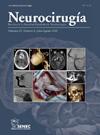神经系统完整的胸腰椎爆裂性骨折患者是否还需要前路融合?系统回顾和荟萃分析
IF 0.8
4区 医学
Q4 NEUROSCIENCES
引用次数: 0
摘要
目的通过系统回顾和单臂荟萃分析,评价和比较神经功能完整的胸腰椎爆裂骨折(TLBF)患者接受前路融合、前后联合手术或短节段椎弓根螺钉固定(PSF)的影像学指标以及短期和长期预后。方法按照PRISMA指南进行系统评价。纳入标准包括2004年至2023年间发表的文章,英文全文,入院时无脊髓或神经根损伤的爆裂性骨折,未融合的短节段PSF,前路或联合融合方法,18岁或以上的患者,以及至少12个月的随访。采用综合meta分析软件进行meta分析。采用单臂荟萃分析方法,确定每个研究组的短期和长期结局汇总指标。然后用简单的比较法对所得数据进行比较。结果前路组、联合组和PSF组入院时的合并平均Cobb角分别为18.2°(95% CI, 14.6 ~ 21.8)、11.7°(95% CI, 9.7 ~ 13.5)和17.1°(95% CI, 15.1 ~ 19.1)。在所有组中,前路融合术都实现了更大程度的后凸矫正,但只有联合组在出院后出现了不显著的矫正损失(SMD = 0.809 [95% CI, 0.270, 1.348])。入院时,联合组前椎体压缩率为55.2% (95% CI, 46.3 ~ 64.0), PSF组为37.8% (95% CI, 33.7 ~ 41.9)。经皮PSF组的手术时间、出血量和住院时间最低,平均分别为96.5 min (95% CI, 82.4-110.6)、83.8 ml (95% CI, 71.7-95.9)和6.6天(95% CI, 4.7-8.5)。所有技术都显示出相似的深伤口感染和植入物相关并发症的发生率。前路组的Oswestry残疾指数(ODI)总分为17.2 (95% CI, 10.4 ~ 23.9),联合组为15.4 (95% CI, 11.5 ~ 19.3), PSF组为13.4 (95% CI, 10.4 ~ 16.3)。结论对于神经功能完整、后凸角度小于19.1°、前椎体压缩率小于41.9%的胸腰椎爆裂性骨折患者,术中出血量少、手术时间短、住院时间短、末次随访时ODI评分高,不融合短节段椎弓根螺钉固定可能是较好的选择。常规前路融合术对后凸矫正具有很高的潜力。Cobb角从手术到最终随访的损失仅在接受联合手术的患者中不显著。在确定手术入路时,外科医生应仔细权衡前路和联合融合与标准PSF相比明显更高的手术创伤的优势。本文章由计算机程序翻译,如有差异,请以英文原文为准。
Is anterior fusion still necessary in patients with neurologically intact thoracolumbar burst fractures? A systematic review and meta-analysis
Objectives
To conduct a systematic review and single-arm meta-analysis to evaluate and compare radiological indicators, as well as short-term and long-term outcomes, in patients with neurologically intact thoracolumbar burst fractures (TLBF) who underwent anterior fusion, combined anterior-posterior procedure, or short-segment pedicle screw fixation (PSF).
Methods
A systematic review following PRISMA guidelines was conducted. Inclusion criteria comprised articles published between 2004 and 2023, full-text availability in English, burst fractures without spinal cord or nerve root injuries at admission, short-segment PSF without fusion, anterior or combined fusion methods, patients aged 18 or older, and a minimum 12-month follow-up.
Meta-analysis was carried out using Comprehensive Meta-Analysis software. Using a single-arm meta-analysis method, pooled indicators of short- and long-term outcomes for each studied group were determined. The obtained data were then compared using simple comparison.
Results
The pooled mean Cobb angle at admission for the anterior, combined, and PSF groups was 18.2° (95% CI, 14.6−21.8), 11.7° (95% CI, 9.7−13.5), and 17.1° (95% CI, 15.1–19.1), respectively. Anterior fusion achieved a greater degree of kyphosis correction across all groups, but only the combined group showed a nonsignificant loss of correction after discharge (SMD = 0.809 [95% CI, 0.270, 1.348]). The anterior vertebral body compression rate at admission was 55.2% (95% CI, 46.3−64.0) in the combined group and 37.8% (95% CI, 33.7−41.9) in the PSF group.
Operative time, blood loss, and hospitalization duration were lowest in the percutaneous PSF group, with means of 96.5 min (95% CI, 82.4–110.6), 83.8 ml (95% CI, 71.7–95.9), and 6.6 days (95% CI, 4.7–8.5), respectively. All techniques demonstrated a similar incidence of deep wound infections and implant-related complications.
The pooled Oswestry Disability Index (ODI) scores were 17.2 (95% CI, 10.4−23.9) for the anterior group, 15.4 (95% CI, 11.5–19.3) for the combined group, and 13.4 (95% CI, 10.4–16.3) for the PSF group.
Conclusions
For patients with neurologically intact thoracolumbar burst fractures, with a kyphotic angle of less than 19.1° and an anterior vertebral body compression rate of less than 41.9%, short-segment pedicle screw fixation without fusion may be preferable option due to reduced intraoperative blood loss, shorter operation duration, shorter hospital stay, and better ODI scores at final follow-up. Routine anterior fusion has demonstrated high potential for kyphosis correction. The loss of the Cobb angle from surgery to final follow-up was nonsignificant only in patients who underwent combined surgery. When determining the surgical approach, surgeons should carefully weigh the advantages of anterior and combined fusion against the significantly higher surgical trauma compared to standard PSF.
求助全文
通过发布文献求助,成功后即可免费获取论文全文。
去求助
来源期刊

Neurocirugia
医学-神经科学
CiteScore
1.30
自引率
0.00%
发文量
67
审稿时长
60 days
期刊介绍:
Neurocirugía is the official Journal of the Spanish Society of Neurosurgery (SENEC). It is published every 2 months (6 issues per year). Neurocirugía will consider for publication, original clinical and experimental scientific works associated with neurosurgery and other related neurological sciences.
All manuscripts are submitted for review by experts in the field (peer review) and are carried out anonymously (double blind). The Journal accepts works written in Spanish or English.
 求助内容:
求助内容: 应助结果提醒方式:
应助结果提醒方式:


